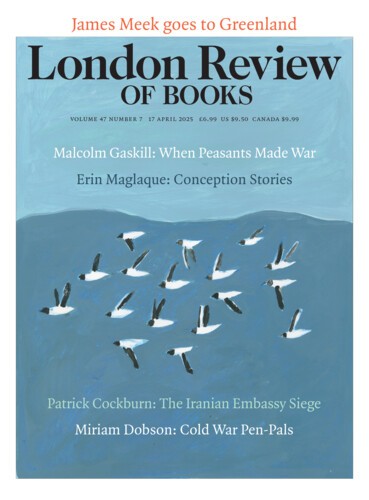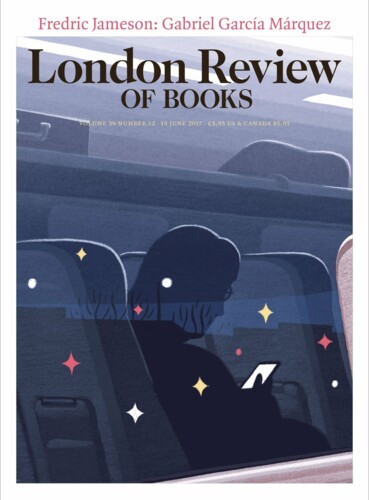The pain of toothache arrives long after the damage has been done. The process begins when bacteria in the mouth turn sugars from our food into acid, which etches the tooth’s enamel, allowing the bacteria to penetrate further. Only when they hit the nerve bundles at the tooth’s pulpy core does the sufferer become aware – all too painfully aware – of their predicament. Dental pain comes in pulsing waves, seemingly synchronised with every beat of the heart. Once bacteria have penetrated into the tooth, they release gases that swell the pulp, compounding the pain. The Stanford Encyclopedia of Philosophy cites toothache as one of two examples of natural evil (the other is hurricanes).
Many ancient cultures blamed tooth worms. The Roman physician Scribonius recommended fumigation with smoke from poisonous henbane seeds placed on hot coals. Any worms that succumbed to the treatment were to be spat out. In his history of teeth, Bite, the zoologist Bill Schutt tells us that the fumes would at least have dulled the patient’s pain by giving them a noxious high. Belief in tooth worms persisted across the centuries. A carved ivory tooth from 18th-century France opens to reveal a battle being waged within: club-wielding humans fighting a demonic worm on top of a pile of skulls.
Most vertebrates have teeth, and Schutt’s entertaining book covers everything ‘from three-inch fang blennies to thirty-foot prehistoric crocodiles’. The evolution of teeth began in the oceans around half a billion years ago. First, filter-feeding fish evolved jaws – not to eat, but to increase the efficiency of respiration. As their mouths were repurposed to grip onto food, small bony bumps on the skin known as odontodes migrated into the jaws. Over time, these became teeth. Exactly where the odontodes migrated from is unclear. Proposals include: from the surface of the skull down into the mouth (outside-in); forward from the pharynx (inside-out); or by different means (inside and out). Though the origins of teeth remain uncertain, the rapid diversification of jawed fish in the fossil record suggests that they provided an evolutionary advantage. Schutt compares their emergence to ‘a farmer moving into town with a John Deere tractor while everyone else is using horse-drawn ploughs’. Pretty quickly – at least in evolutionary terms – fish jaws were bristling with teeth. Some long and thin fish even evolved an additional set of pharyngeal jaws inside their mouths, allowing them to pull hapless prey further down inside the gullet without chewing.
Teeth do not mark a major evolutionary transition on a par with the creation of sexual populations or multicellular organisms, but it’s fair to argue, as Schutt does, that they played an important role in facilitating animal diversity. As different types of teeth developed, dietary specialisations flourished. Unlike some other anatomical features, nobody argues about what teeth are for, though the narwhal’s horn – in fact a bizarrely modified upper canine – is an obvious exception. Sexual selection can generate large body parts without a clear functional purpose (like a peacock’s tail), but the tusk may have its uses: recent drone footage appears to show narwhals stunning fish with a quick sabre-rap. Alternatively, some scientists have suggested that, being stuffed with nerve bundles, the tusk may sense changes in water salinity. We don’t usually need such lateral thinking to understand what teeth are doing. For example, tiny shrews must eat constantly to avoid starvation, placing their teeth at high risk of erosion. In response, some species of shrew have developed rust-red teeth, fortified by iron hydroxide in the enamel.
Not all species have held onto their teeth: dietary specialisation can drive not only adaptation but also loss. Anteaters, pangolins and echidnas eat only ants and termites; in a striking example of convergent evolution, they have all independently lost their teeth and evolved long sticky tongues. There are at least 134 frog species without teeth, a rate of tooth loss greater than all other vertebrate groups combined. The apparent ease with which they have discarded their teeth may have something to do with amphibian life stages. In other vertebrates, teeth are formed early in embryonic development, but in frogs this process is deferred: tadpoles have no teeth. Only on metamorphosing into a juvenile frog do their mouths restructure, forming the bony studs that will allow them to chew food rather than simply scrape algae with their little keratin beaks. That delay means that genetic mutations influencing tooth growth are likely to leave the embryonic development of frogs unaffected.
One question Schutt doesn’t answer is whether other animals experience toothache as agonising as our own. Crocodiles regrow teeth throughout their lives, and as a consequence a crocodile will reflexively bite down with full force on a metal bar inserted in its mouth, even to the point of shattering its teeth. Testing the jaw strength of mammals who can’t replace their adult teeth is harder: they won’t bite. But even compared to other mammals, there are reasons to think that our dental problems may be particularly bad. The loss of teeth in mammals is usually a death sentence, but human societies can take care of the elderly: we suffer on with purées, soups and smoothies. The invention of cookery and soft foods has meant that bacteria are not as easily scraped off our teeth by the sheer act of eating, so most of us have to abrade them with nylon twice a day. Even so, the disastrous increase in refined sugar in the modern diet has left more than 2.5 billion people around the world with dental cavities.
Schutt credits the French surgeon Pierre Fauchard with recognising the dangers of sugar consumption. Fauchard, an early advocate of fillings, blamed the formation of dental cavities on acids from sugary food. He was born in 1678, five years before the first observation of oral bacteria by Antonie van Leeuwenhoek, but the ‘little animals’ Leeuwenhoek found in his own mouth weren’t identified as the progenitors of these acids, and thus the culprits of tooth decay, until two hundred years later. Apollonia, the patron saint of dentistry, was a popular subject in medieval art, usually depicted with her signature pair of pincers clasping a gigantic molar. But it’s not only tooth loss that makes cavities dangerous: on both jaws there is potential for deeper damage. As Schutt’s dentist puts it, pointing at an X-ray of one of his upper molars, ‘on the other side of that sinus is your brain.’ In the lower jaw, infections offer a route for bacteria to be transmitted from an abscessed tooth to the floor of the mouth. From there, they can speed through the bloodstream. One rare side effect of dental procedures is that by carving up the mouth they enhance these routes of infection, permitting certain species of oral bacteria to flow down to the patient’s heart.
Complete extraction begins to seem attractive, but that brings its own difficulties. Fauchard pioneered replacing lost teeth with prosthetics, and during the 18th century dentures became increasingly popular. George Washington consulted eight dentists over his lifetime and had a mouth like a battlefield. When the dental pathologist Reidar Sognnaes analysed four surviving sets of his dentures in 1976, he found teeth from elephants, hippos, walruses and cows alongside Washington’s own. The dentures were used not for eating but for orating, giving shape to Washington’s slurred speech. Once the spring-laden contraptions were in his mouth, he would have had to clench his jaw to stop it popping open like a jack-in-the-box. Attempts to transplant healthy teeth into diseased mouths were doomed to failure – without a root system, the transplanted tooth simply died – but some dentists still kept a stock of fresh teeth on hand for patients who requested the procedure. Often these had been ‘bought’ from enslaved people for a pittance; the account book from Washington’s Mount Vernon plantation contains a description of one transaction for nine teeth. It’s possible that such teeth made their way into Washington’s own mouth, though there’s no evidence to prove it.
Sognnaes also performed a particularly interesting post-mortem odontological identification: a 56-year-old Austrian man in poor oral health, with a nine-unit maxillary bridge and a lower jaw characterised by periodontal bone breakdown around the mandibular incisor roots. Today, the charred fragments of Adolf Hitler’s jaw are kept in the Russian state archives and guarded by the security services. Somewhere within the FSB there must be an employee (perhaps a whole bureau) whose job it is to field requests to see the teeth. In 2017, a group of French scientists negotiated their way into the reliquary. Their letter in the European Journal of Internal Medicine is an exercise in grasping at straws: they argue that the absence of lead on the surface of Hitler’s dental calculus deposits ‘could be understood as an argument against the hypothesis of an intra-buccal firearm wound’, but conclude with the statement that ‘further analysis’ may be needed.
Modern dentistry continues to progress, at least for those who can afford it. In 1976 Theodore Ziolkowski conducted a survey of Renaissance portraits and found that the subjects almost never had their teeth on display. When he performed a similar analysis of the Princeton faculty photo book, more than a hundred of his colleagues had chosen to show their teeth – ‘most of them in full glittering grins’. We may be going back the other way. The British charity Dentaid, created to provide dental care to people overseas, has been offering free clinics in the UK since 2015, now that so many people are unable to access an NHS dentist. When one practice opened in Bristol last year, hundreds of patients gathered outside; the police turned up to manage the queue. Newspapers regularly report on desperate individuals pulling out their own teeth with pliers. Nabokov’s Pnin, channelling his author’s own dental horror, describes the ‘warm flow of pain’ that gradually replaces ‘the ice and wood of the anaesthetic in his thawing, still half-dead, abominably martyred mouth’. At least he was able to see a dentist.
Send Letters To:
The Editor
London Review of Books,
28 Little Russell Street
London, WC1A 2HN
letters@lrb.co.uk
Please include name, address, and a telephone number.

